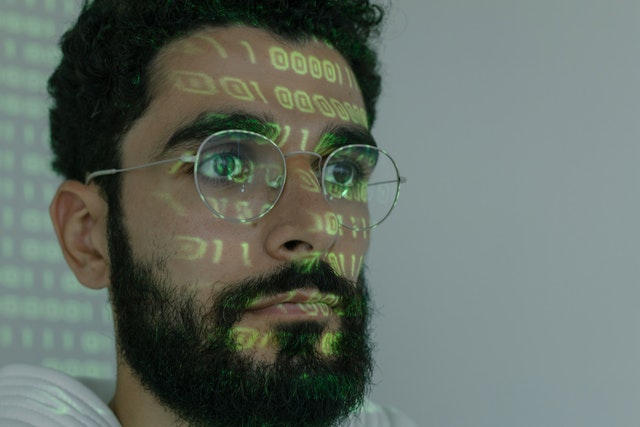Introduction
The internet is old. Thankfully the newest version has just arrived. Web3 is overused but underappreciated, why exactly is web3 better than what we currently have?
Web1: Information, shared globally. You can search for info from around the world (no more needing libraries)
Web2: Peer-to-peer. Two-way live communication: You can chat to another person, upload content, like a post & run your own online store.
Web3: Ownership. Some examples show what this means:
- You earn ad revenue for your content (instead of ad revenue going to Google/TikTok/Instagram/Facebook)
- You keep your followers if you move from app to app
- You can’t get kicked off a social media platform because of their self-made made rules (which they often enforce without transparency or recourse)
- Much fewer middlemen, which makes online transactions cheaper e.g. everything about retail banking is cheaper in DeFi – as shown by research from the IMF
- More competition for apps, which means you get more choices and more-suitable apps designed to add value to you
- Digital assets are owned by you e.g. in an online game you pay for skins, you get to own these & trade them, and use them across many games & ecosystems.
The Internet has evolved remarkably over the last twenty years or so. From Internet Relay Chat (IRC) to present social media platforms, we’ve come a long way. From simple digital payments to sophisticated online banking services, we’ve got you covered. We’ve even witnessed the emergence of brand-new Internet-based technologies like crypto and blockchain. The Internet has become an essential part of human interactions and connectivity, and it is still evolving. We’ve already seen Web 1.0 and 2.0, but what is Web 3.0 and what can we expect from it? Let’s get into the specific details and see what awaits us.
What Is Web 3.0

Web 3.0, also known as Web3, is the next generation of the internet, in which websites and apps will be able to manage data intelligently and human-like. Using various technologies such as blockhain, machine learning (ML), decentralized ledger technology (DLT), Big Data, and many more. Tim Berners-Lee, the inventor of the World Wide Web, had a vision of a more autonomous, intelligent, and open internet.
Web3 is a bold step closer to that vision, and it holds exciting possibilities for you as a user.
In Web 3.0, most data & apps will be decentralized, which would be a big leap ahead of our present generation of the internet (Web 2.0), where data is largely housed in centralized repositories.
Both humans and machines will be able to engage with data. However, programs must be able to comprehend information both conceptually and culturally for this to happen. Given this, the semantic web, decentralization and artificial intelligence (AI) are the pillars of Web 3.0.
How Does Web 3.0 Work?

Web 3.0 aims to use blockchains to give users ownership and advanced machine learning techniques to provide customized and relevant content more quickly. Machines will be able to intuitively analyze and recommend content thanks to improved search algorithms and advancements in Big Data analytics. Web 3.0 will also emphasize content ownership by users and support for open digital economies. Digital economies are simply more efficient (quicker & cheaper), because middlemen are replaced by code. Middlemen will still exist however, predatory rent-seeking activities will be reduced and it will be easier for new apps & tech to be built (without the suffocating oligopolies of web2 – who have a history of stifling innovation).
Present websites frequently display static information or user-generated material, such as forums or social media. While this permits data to be shared widely, it does not serve the interests of unique users. A website should customize the information it provides to each user in the same way as real-world human communication does. When information is openly shared through Web 2.0, users lose control and ownership of it.
Web 3.0, Blockchain & Cryptocurrency

We may expect a strong convergence and symbiotic interaction between these technologies and other disciplines since Web 3.0 networks will run through decentralized protocols the founding blocks of blockchain and cryptocurrency technology. They’ll be interoperable, fully integrated, and powered by smart contracts to support everything from micro-transactions in Africa to censorship-resistant P2P data file storage and sharing through apps. like Arweave, to entirely transform how businesses conduct and operate. The current stream of DeFi technologies is just the beginning major use-case. Major chains (like Ethereum) are scaling (with L2’s like Arbritrum, ZK proofs, Optmism & Polygon). This is the catalyst allowing dApps (decentralized apps) to be built and accommodate users at scale. Why is scale so critical? Mainstream mass adoption requires scale in order for billions of users to be able to use the dApps. Now that scaling is a reality, the dApp ecosystem is about to flourish with real-wor use-cases that compete with web2 apps.
An Overview Of The Web’s Evolution

Web 3.0 will emerge as a natural progression of previous web tools paired with cutting-edge technologies such as AI and blockchain, as well as increased user interconnection and internet usage. In comparison to its previous versions, web 1.0 and 2.0, Internet 3.0 appears to be a step forward.
Web 1.0
Web 1.0, also known as the Static Web, was the first and most reliable web in the 1990s, while only giving access to restricted contents and very little to no user engagement. It wasn’t common to practise back then to create user pages or simply leave comments on articles.
Because there were no algorithms to sift through web pages in Web 1.0, users had a difficult time finding useful information. Simply described, it was like a one-way highway with a tiny pathway, where the content was created by a small group of people and information was largely sourced from directories.
Web 2.0
Thanks to developments in online technologies like Javascript, HTML5, CSS3, and others, the Social Web, or Web 2.0, made the internet a lot more dynamic, allowing companies to build interactive web platforms like YouTube, Facebook, and Wikipedia, and many more.
Because data can now be transferred and shared across several platforms and applications, social networks and user-generated content production have thrived.
Several web pioneers, including the aforementioned Jeffrey Zeldman, pioneered the set of tools in this internet era.
Web 3.0 & The Future
Web 3.0 will be the next stage in the internet’s evolution, allowing it to handle and process data with relatively close human-like intelligence through the use of artificial intelligence (AI) systems that can run intelligent algorithms to assist users.
When considering the history of the Internet, the evolution of a semantically intelligent web makes sense. The data was initially given to users in a static format. Users could then interact with the data dynamically. All of that data will now be used by algorithms to improve user experience and make the web more personalized and familiar. You only need to look at YouTube or Netflix to see how powerful algorithms can be and how far they have progressed.
While not fully defined, Web 3.0 can make use of peer-to-peer (P2P) technologies such as blockchain, open-source software, virtual reality, the Internet of Things (IoT), and others. Web 3.0 also seeks to open up and decentralize the Internet. Users currently rely on network and cellular providers to access their data and information. With the advent of distributed ledger technologies, this may soon change, and users may regain control of their data.
Summary

The Internet is constantly changing. Web 1.0 offered users a static experience, with no ability to create the content-rich sites that exist today. Web 2.0 brought us closer together through social media and dynamic websites, but at the expense of centralization.
Web 3.0 aims to give us ownership, and control over our online information while also establishing a semantic web. This means that machines will have no trouble reading and processing user-generated data. Blockchain technology will enable decentralization, free digital identities via crypto wallets, and open digital economies.
With 3D options available, the ways we interact with the internet will become more immersive. The user will also benefit from faster browsing, more relevant advertising, and better customer service. Virtual assistants like Siri and Alexa, as well as connected smart homes, are examples of some of the most widely used Web 3.0 technology.
The most exciting part is that blockchains have just successfully started scaling, which is the catalyst opening up a world of new dApps that compete with web2 and add value to billions of mainstream users globally. Web3 is just getting started, the Web3 future is unfolding right now.



